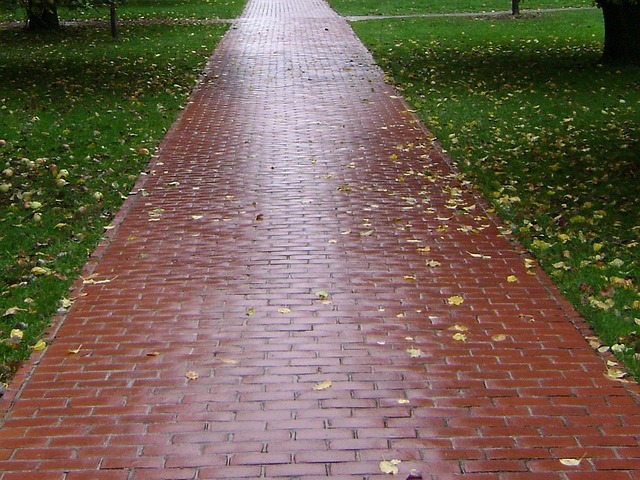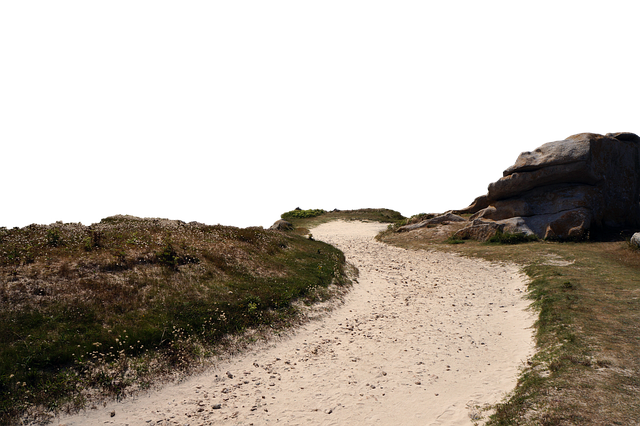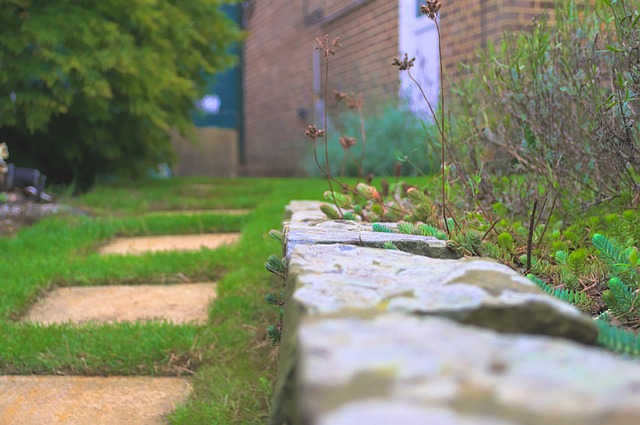Before installing a walkway, assess your outdoor space's unique characteristics. Choose materials like stone, brick, or pavers for aesthetic and functional alignment with your landscape. Professional installation ensures optimal design integration, proper drainage, durability, and enhanced visual appeal through detailed planning, skilled craftsmanship, and adherence to safety guidelines. For complex designs, opt for expert help to achieve a stunning, long-lasting backyard walkway or decorative garden paths.
“Elevate your outdoor space with a reliable and visually appealing walkway—the ultimate touch for any landscape design. From meandering garden paths to structured backyard walkways, the right installation can transform your exterior into a welcoming sanctuary.
This comprehensive guide explores the art of walkway installation, covering site evaluation, material choices (stone, brick, pavers), and installation intricacies. Learn when to DIY or invest in professional expertise for custom solutions that blend functionality and aesthetics, enhancing your outdoor oasis.”
- Understanding Your Outdoor Space: Evaluating Site Conditions and Design Options
- Choosing the Right Material: Stone Walkway, Brick Pathway, or Paver Paths – Pros and Cons
- The Installation Process: From Planning to Laying the Final Stone
- Professional vs. DIY: When to Hire Experts for Your Custom Walkway Solutions
Understanding Your Outdoor Space: Evaluating Site Conditions and Design Options

Before installing a walkway, it’s crucial to understand your outdoor space and its unique characteristics. Evaluating site conditions is a critical first step in the walkway installation process. Consider factors like soil composition, drainage, slope, sunlight exposure, and existing vegetation. These elements will influence the type of material you choose—whether stone, brick, or pavers—and the design of your pathway.
Additionally, thinking about desired aesthetics and functionality is essential. Do you envision a traditional stone walkway or prefer a modern brick pathway? Would decorative garden paths enhance your backyard space? Professional pathway installation experts can guide you in selecting the best materials and designing a custom walkway solution that suits both your needs and the natural landscape of your outdoor area.
Choosing the Right Material: Stone Walkway, Brick Pathway, or Paver Paths – Pros and Cons

When it comes to reliable walkway installation for outdoor spaces, choosing the right material is paramount. Stone walkways offer timeless elegance and durability, ideal for both residential and commercial properties. They enhance curb appeal and can withstand various weather conditions. However, they might be more expensive and require specialized installation compared to brick pathways or paver paths.
Brick pathways are a popular choice for their classic charm and ease of installation. They’re suitable for creating straight or winding garden paths and offer good drainage. Pavers paths, on the other hand, provide a flexible design option, allowing for intricate patterns and custom layouts. They’re an excellent pick for backyard walkways and can be replaced individually if damaged, making them cost-effective in the long run. Professional pathway installation ensures your chosen material stands the test of time, enhancing the beauty and functionality of your outdoor space.
The Installation Process: From Planning to Laying the Final Stone

The installation process for a reliable walkway begins with meticulous planning. This involves assessing the site, considering factors like traffic flow, slope, and existing landscape features to ensure optimal design integration. Professional installers will create detailed blueprints, selecting suitable materials such as stone, brick, or pavers that align with the desired aesthetic and functionality. Permitting and material procurement are crucial steps, followed by site preparation: clearing, grading, and installing any necessary sub-base layers.
Once ready, laying the walkway involves skilled craftsmanship. Stones, bricks, or pavers are precisely arranged, ensuring even spacing and a level surface. This meticulous process includes bed lining, backfilling, and compacting to create a solid foundation. Decorative elements like edging and inlay patterns may be incorporated, enhancing the pathway’s visual appeal. Throughout installation, adherence to safety guidelines is paramount to ensure a safe, durable walkway that transforms outdoor spaces into inviting, functional areas for years to come.
Professional vs. DIY: When to Hire Experts for Your Custom Walkway Solutions

When it comes to installing a reliable and visually appealing walkway in your outdoor space, there are two main approaches: DIY (do-it-yourself) or professional installation. While DIY projects can be satisfying and cost-effective for simple tasks, pathway construction for custom walkway solutions is best left to experts.
Hiring professionals brings numerous benefits, especially for intricate garden paths or backyard walkaways that require specific designs. Their experience ensures a flawless execution of your outdoor walkway design, using materials like stone walkways, brick pathways, or paver paths to enhance the landscape. Professional pathway installation takes into account factors like drainage, durability, and aesthetics, resulting in a functional and aesthetically pleasing addition to your property.
When it comes to transforming your outdoor space with a reliable and aesthetically pleasing walkway, the right installation process and material choices are paramount. Whether you opt for a classic stone walkway, a charming brick path, or modern pavers, each option offers unique benefits and contributes to the overall allure of your garden paths. By carefully evaluating your site conditions, design preferences, and budget, you can make informed decisions throughout the pathway construction journey. Remember that professional pathway installation ensures precision, longevity, and enhanced curb appeal, making it a worthy investment for your custom walkway solutions.
